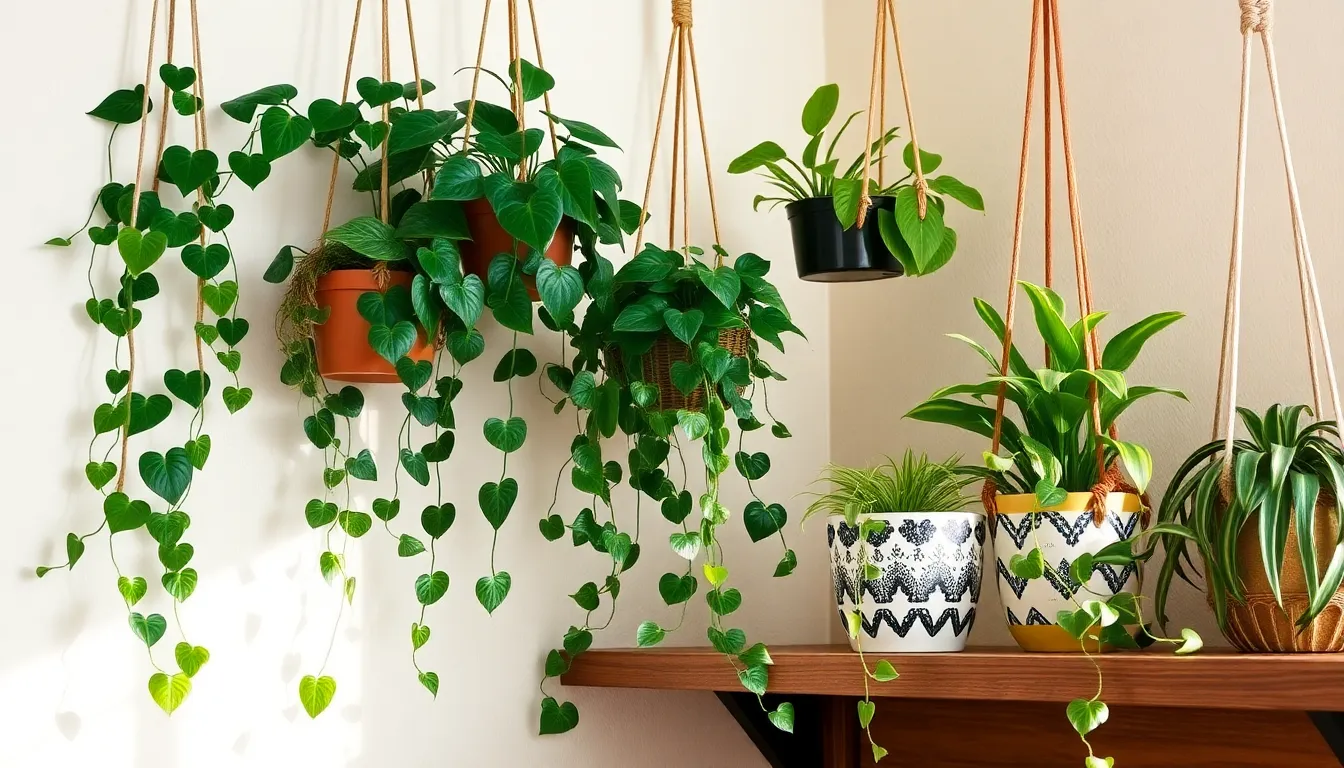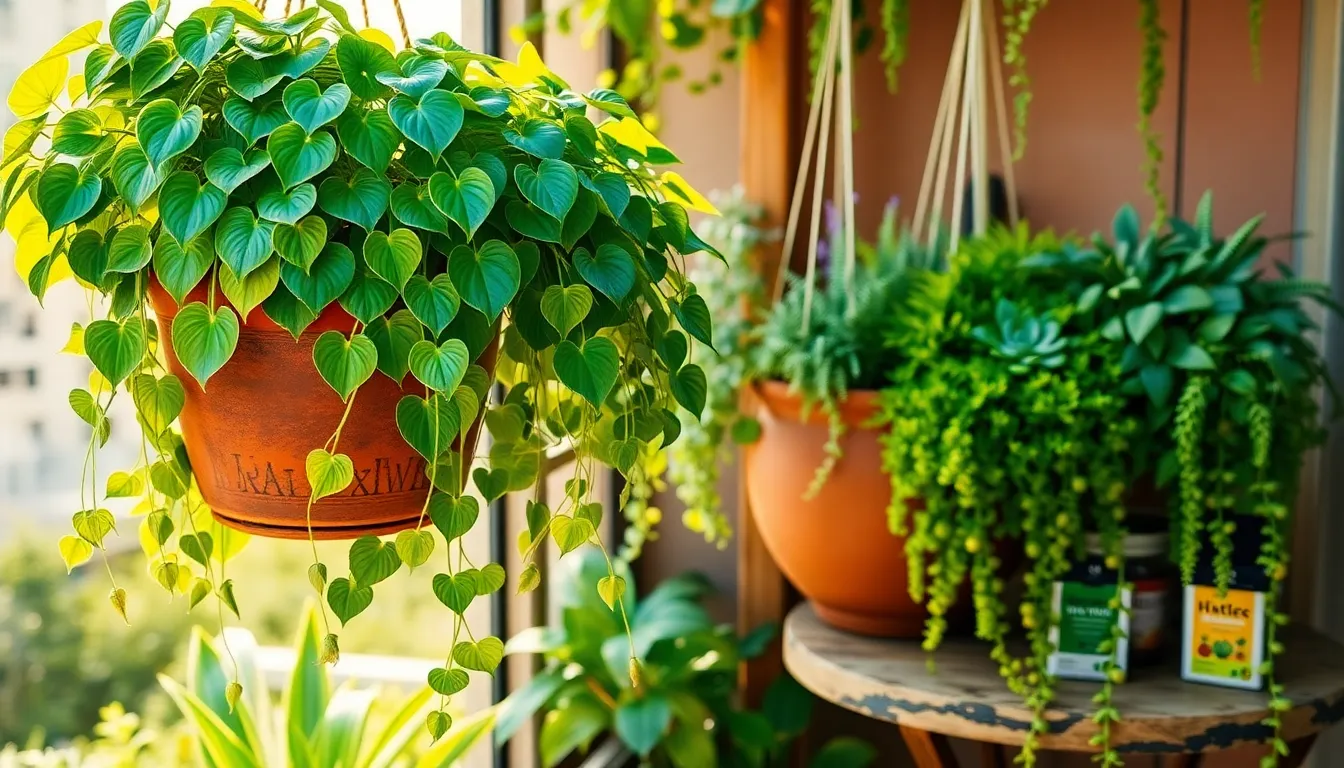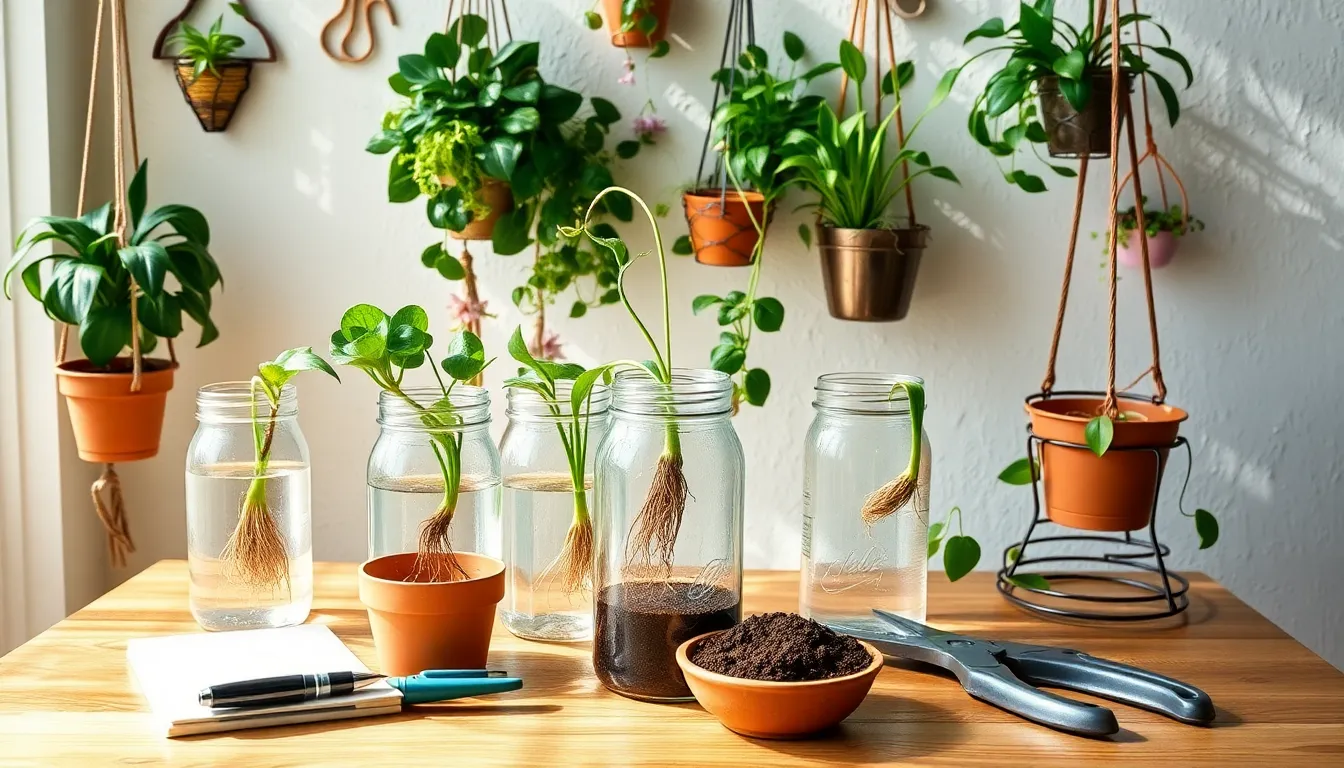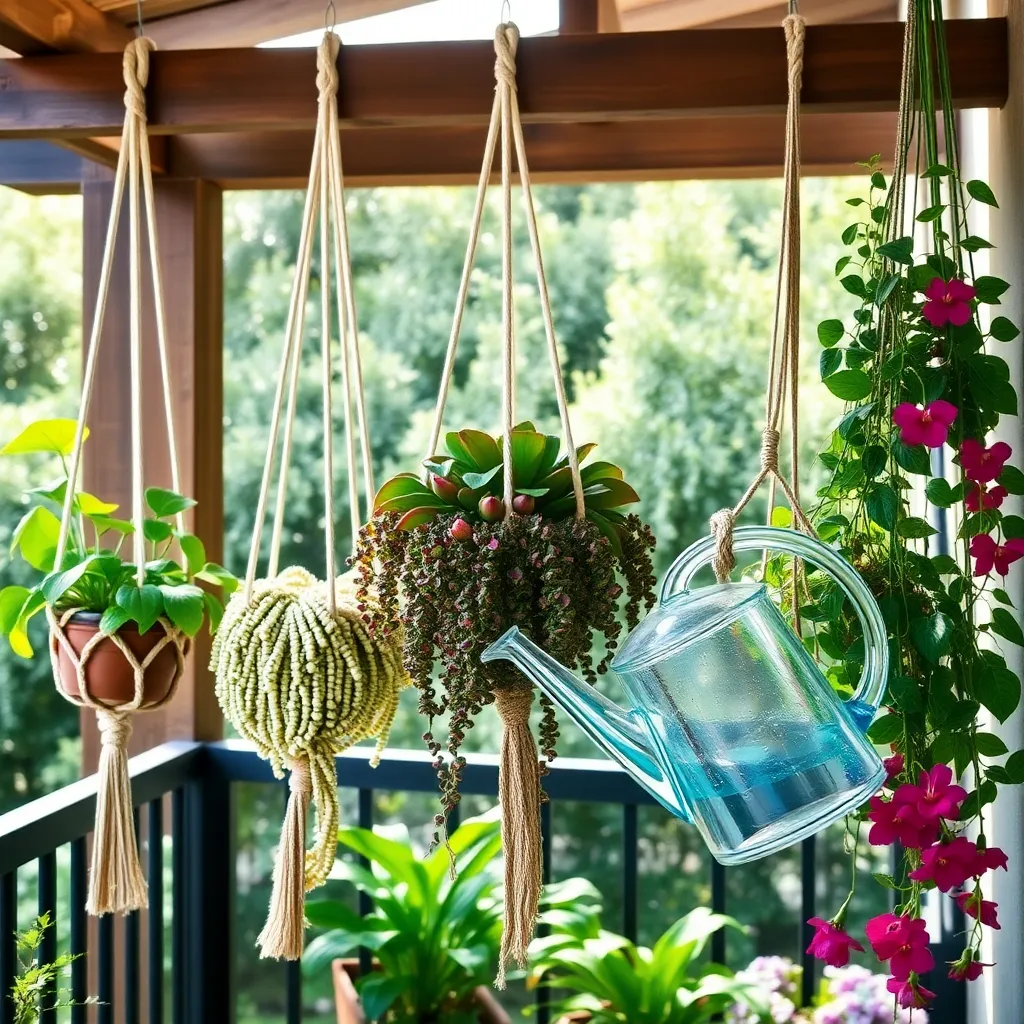Plants bring life, color, and a touch of nature’s serenity into our homes, and for those of us with furry family members, finding pet-friendly options is a priority. Whether you’re a novice gardener just starting your green journey or a seasoned plant enthusiast expanding your collection, understanding which hanging plants are safe for pets is crucial for creating a harmonious home environment. By choosing the right plants, you can enjoy the beauty and benefits of indoor greenery without worrying about the safety of your inquisitive companions.
In this article, we’ll explore eight delightful hanging plants that are not only visually appealing but also non-toxic to cats and dogs. Whether you have a sunny windowsill or a shaded corner, you’ll discover choices that suit various light and care requirements, making plant care accessible to everyone. From the cascading elegance of the Boston Fern to the vibrant hues of the Spider Plant, each of these selections offers unique charm and low-maintenance care, perfect for busy households. Let’s delve into this pet-friendly green world and find the perfect hanging plant that complements your home and keeps your pets safe and sound.
Understanding Pet-Safe Plant Choices
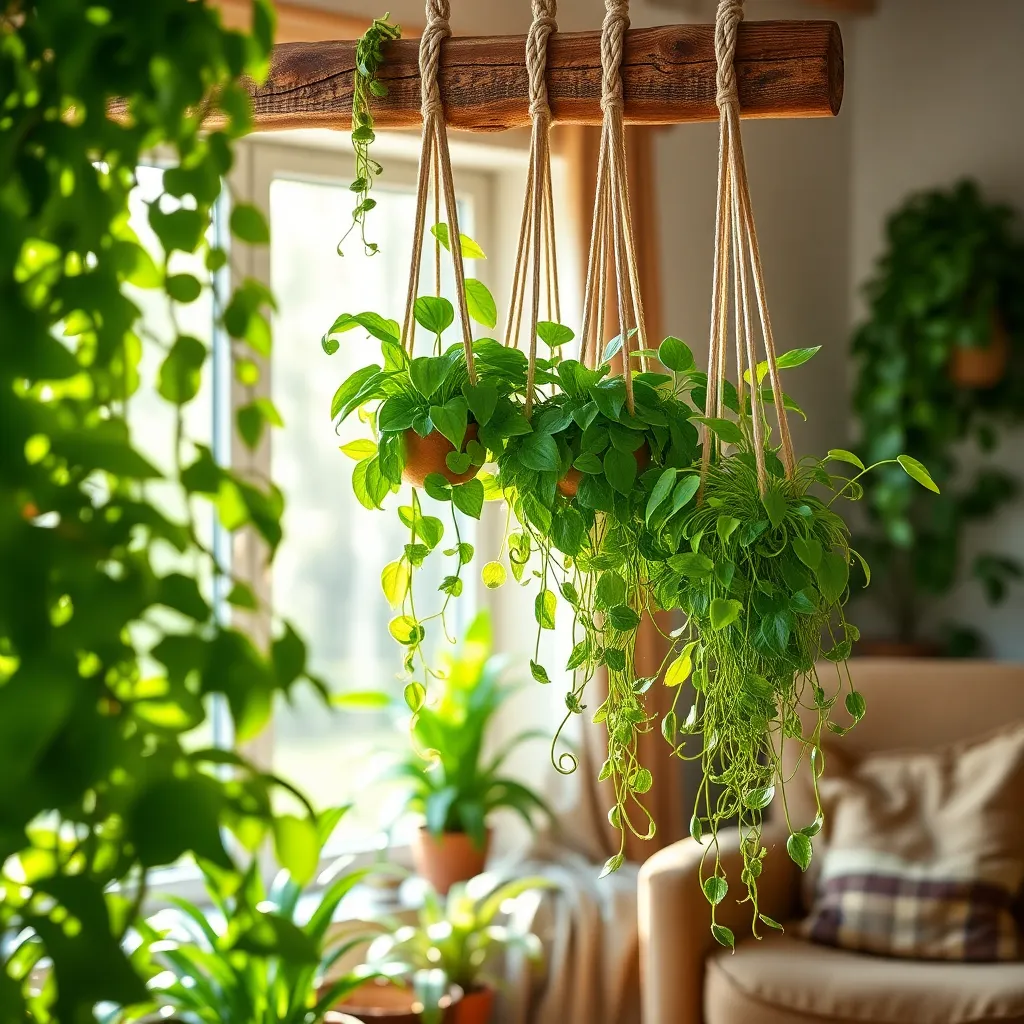
When selecting plants that are safe for pets, it’s crucial to understand which species are non-toxic to cats and dogs. Researching the specific requirements of pet-safe plants ensures that your home remains a secure environment for your furry friends.
Choose plants listed by the ASPCA as non-toxic, such as spider plants and Boston ferns. These species not only thrive in hanging baskets but also purify the air, providing dual benefits for your home.
For successful growth, ensure your hanging plants receive adequate light and proper soil conditions. Use a well-draining potting mix and place plants in areas where they get indirect sunlight, as too much direct sun can scorch their leaves.
Water pet-safe hanging plants consistently, but be cautious not to overwater, as this can lead to root rot. A general rule of thumb is to water when the top inch of soil feels dry, keeping the plant healthy and vibrant.
Advanced gardeners might consider using self-watering pots to maintain optimal soil moisture levels. This technique allows for consistent hydration, reducing the risk of under or over-watering your cherished pet-safe plants.
Benefits of Hanging Plants at Home
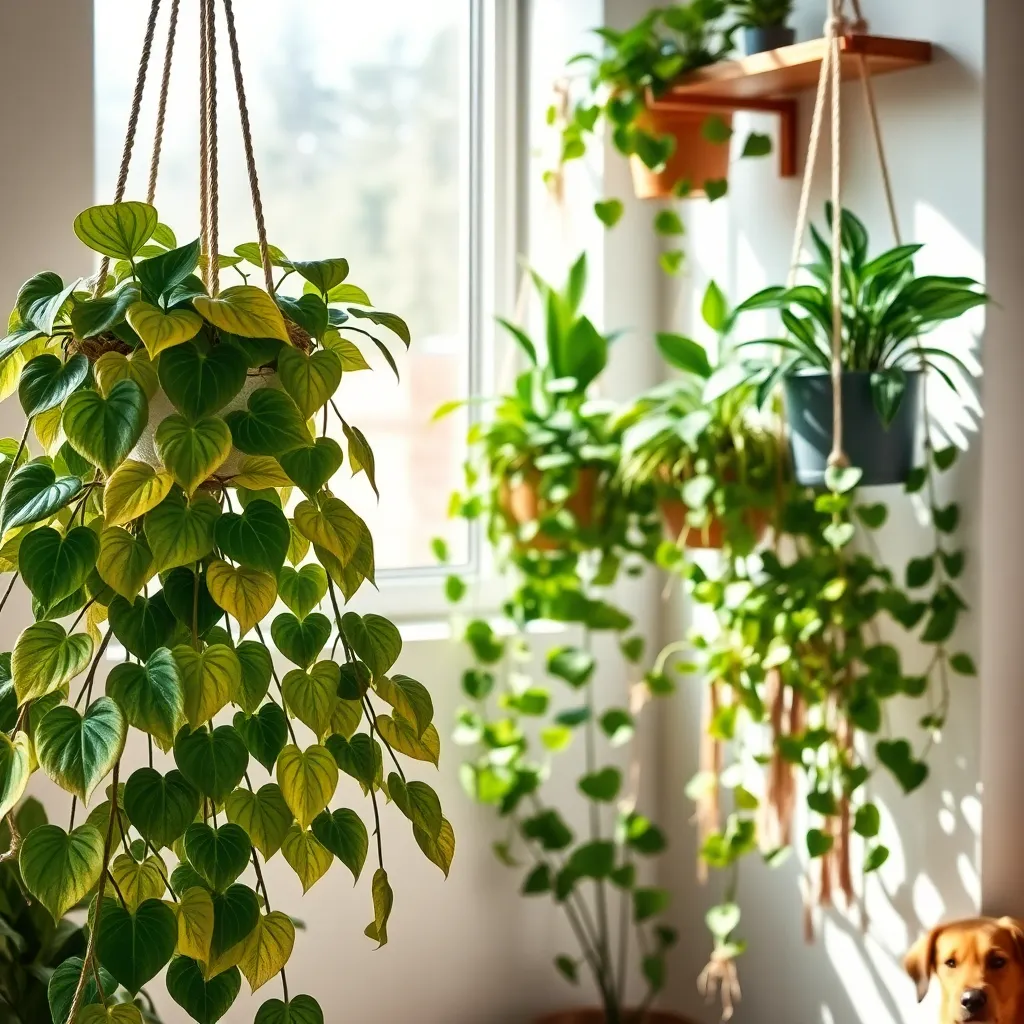
Hanging plants offer a unique way to bring greenery into your home without taking up floor space. This is particularly beneficial in smaller homes or apartments where space is a premium.
By elevating plants, you can add layers of visual interest to a room, enhancing its aesthetic appeal. Choose plants with cascading foliage, such as spider plants or pothos, to create a lush, green curtain effect.
Plants at a higher level can also improve air quality more efficiently, as they can filter airborne toxins closer to the ceiling. For maximum air purification, consider hanging a Boston fern or a pet-safe bamboo palm.
Additionally, hanging plants can be safer for pets since they are out of reach, reducing the risk of pets ingesting plant parts. Ensure the hanging setup is sturdy and secure to prevent any accidents.
Watering hanging plants can be slightly different than those on the ground. Use a step stool and a watering can with a long spout to effectively reach the soil without drenching the foliage.
Consider the light requirements of each plant when choosing a location; many hanging plants thrive in indirect light. If natural light is limited, supplement with a grow light to ensure healthy growth.
Spider Plant: A Green Companion
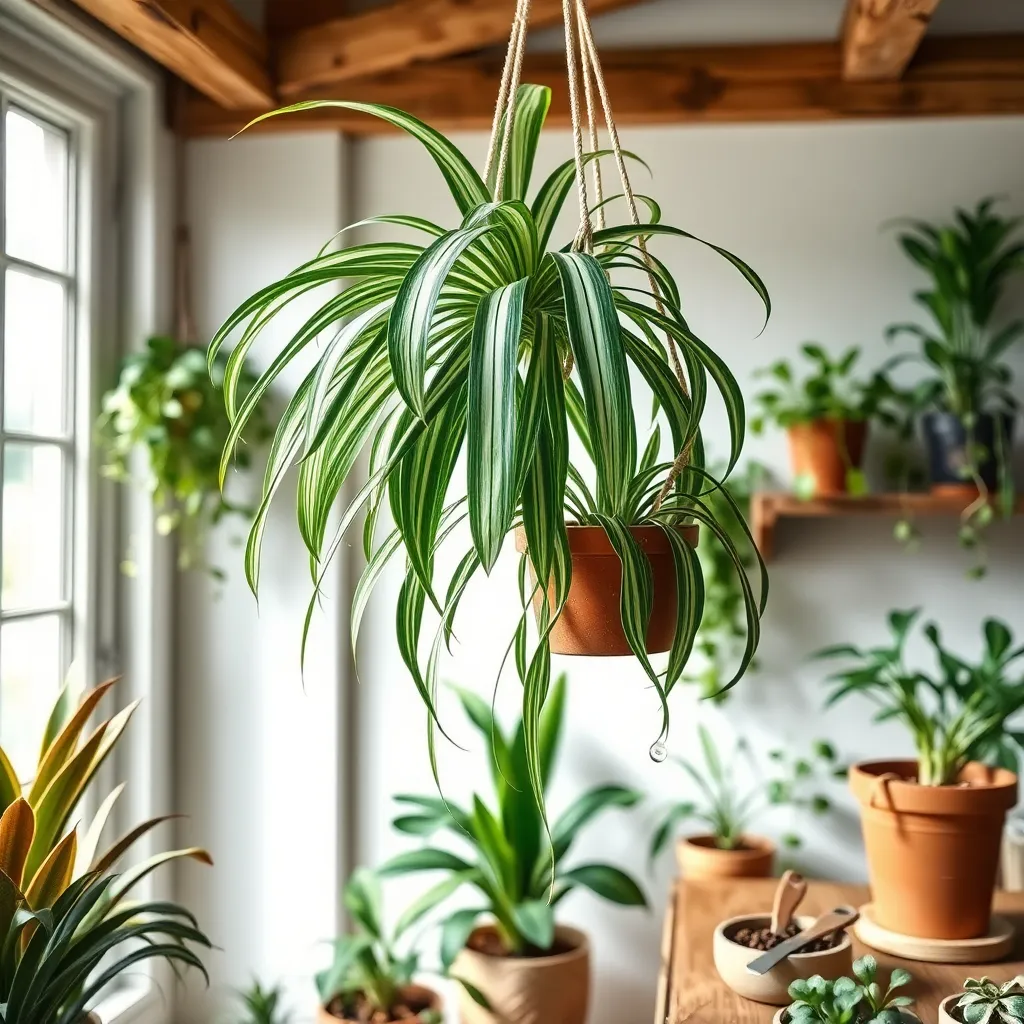
The Spider Plant, known for its arching leaves and small white flowers, is an easy-to-care-for option that adds vibrancy to any space. Pet-friendly and resilient, it thrives as a hanging plant, making it a perfect addition to your home.
When it comes to care, Spider Plants are remarkably undemanding. They prefer well-draining soil, such as a mix of potting soil and perlite, to ensure their roots do not become waterlogged.
Watering is straightforward; allow the soil to dry out slightly between waterings to prevent overhydration. Generally, watering once a week is sufficient, but adjust frequency during warmer months to keep the plant lush and healthy.
For optimal growth, place your Spider Plant in a location with bright, indirect sunlight. If you’re looking to boost its growth, consider fertilizing every month during the growing season with a balanced liquid fertilizer.
Advanced gardeners might propagate Spider Plants by removing the plantlets that form on long stems. Simply pot these in new containers with fresh soil to expand your collection or share with friends.
Boston Fern: Lush and Safe
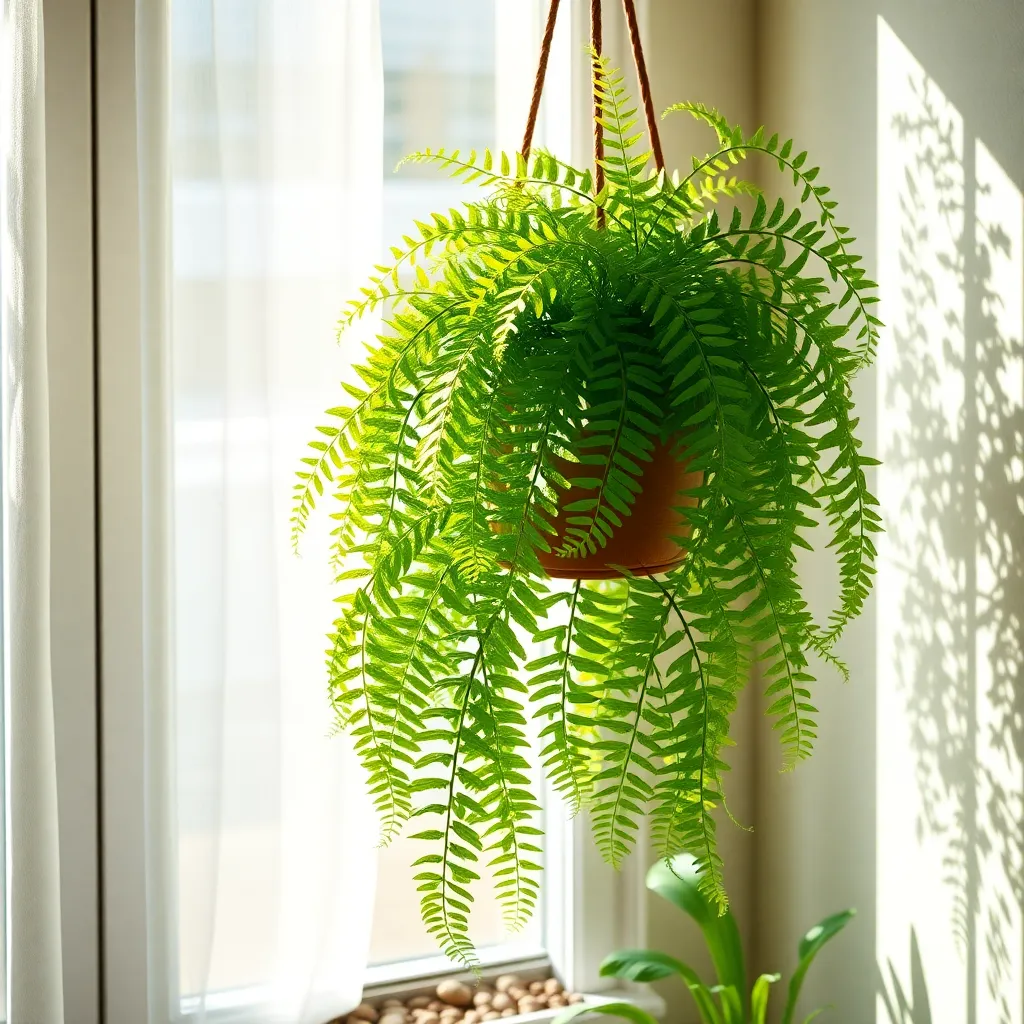
Boston Ferns are an excellent choice for pet-friendly hanging plants that bring a lush, tropical vibe to your home. Known for their feathery fronds, these ferns thrive in indirect light, making them perfect for hanging baskets in sheltered areas of your home.
To ensure your Boston Fern remains vibrant, maintain humidity levels by misting the leaves regularly or placing a tray of water nearby. Water your fern consistently, keeping the soil evenly moist but not soggy, as they prefer well-draining, peat-based potting mix.
For beginners, remember that Boston Ferns can be sensitive to dry air and direct sunlight, which can cause the leaves to brown. More experienced gardeners might consider using a humidity gauge to monitor moisture levels, ensuring the plant’s environment is optimal for growth.
Fertilizing your Boston Fern is beneficial, particularly during the growing season from spring to early fall. Use a balanced liquid fertilizer diluted to half strength every 4-6 weeks to promote lush growth and maintain the plant’s health.
String of Pearls: Stylish and Secure
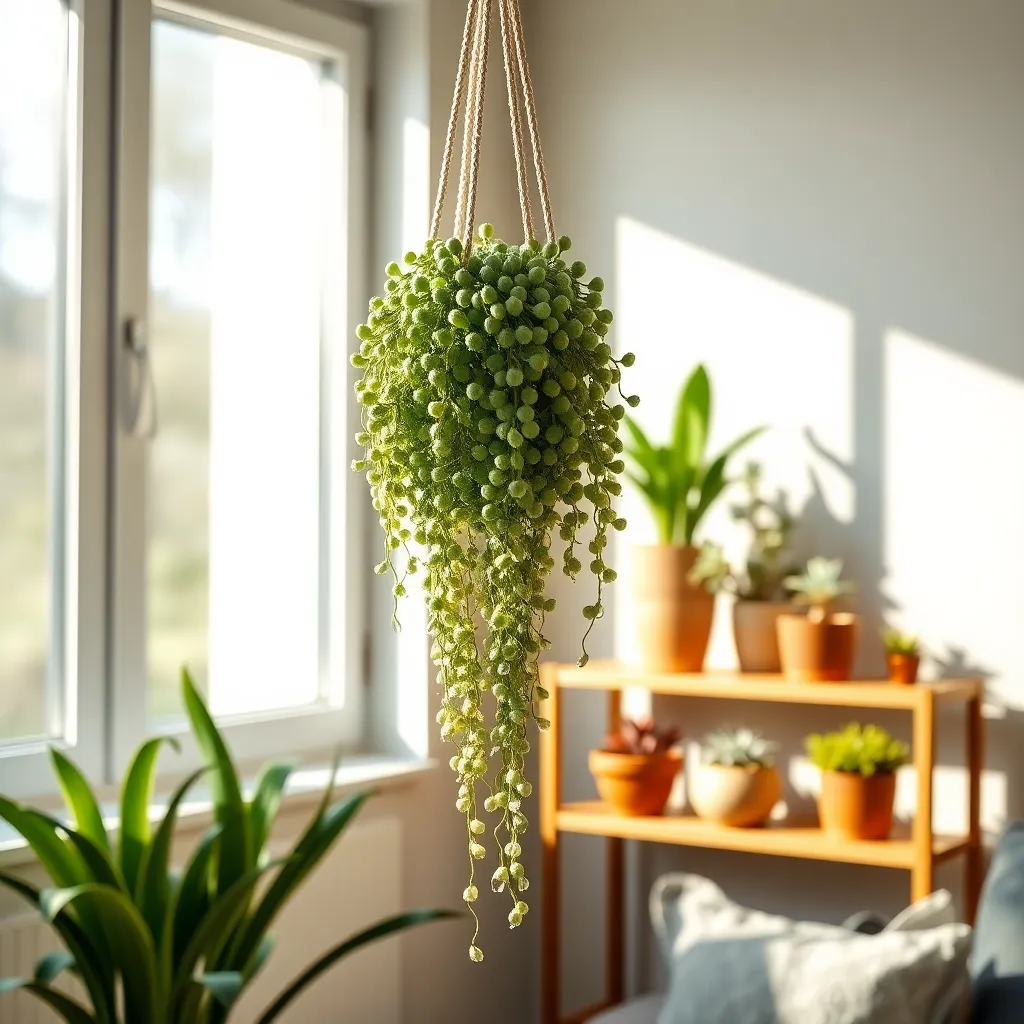
String of Pearls is a captivating succulent that adds a unique aesthetic to any home with its cascading strands of bead-like foliage. Known for its drought tolerance, this plant is perfect for those who might occasionally forget to water.
To cultivate a thriving String of Pearls, place it in a location with bright, indirect sunlight, which will encourage lush growth. This plant prefers well-draining soil, so consider using a cactus or succulent mix to prevent root rot.
Watering should be done sparingly; allow the soil to dry out completely between waterings to mimic its natural arid habitat. During the growing season, water every two to three weeks, reducing the frequency in winter.
For experienced gardeners looking to propagate, simply snip off a stem and let it dry for a day before placing it on moist soil. This plant is non-toxic to pets, making it a stylish and safe choice for households with curious animals.
Burro’s Tail: A Succulent Option
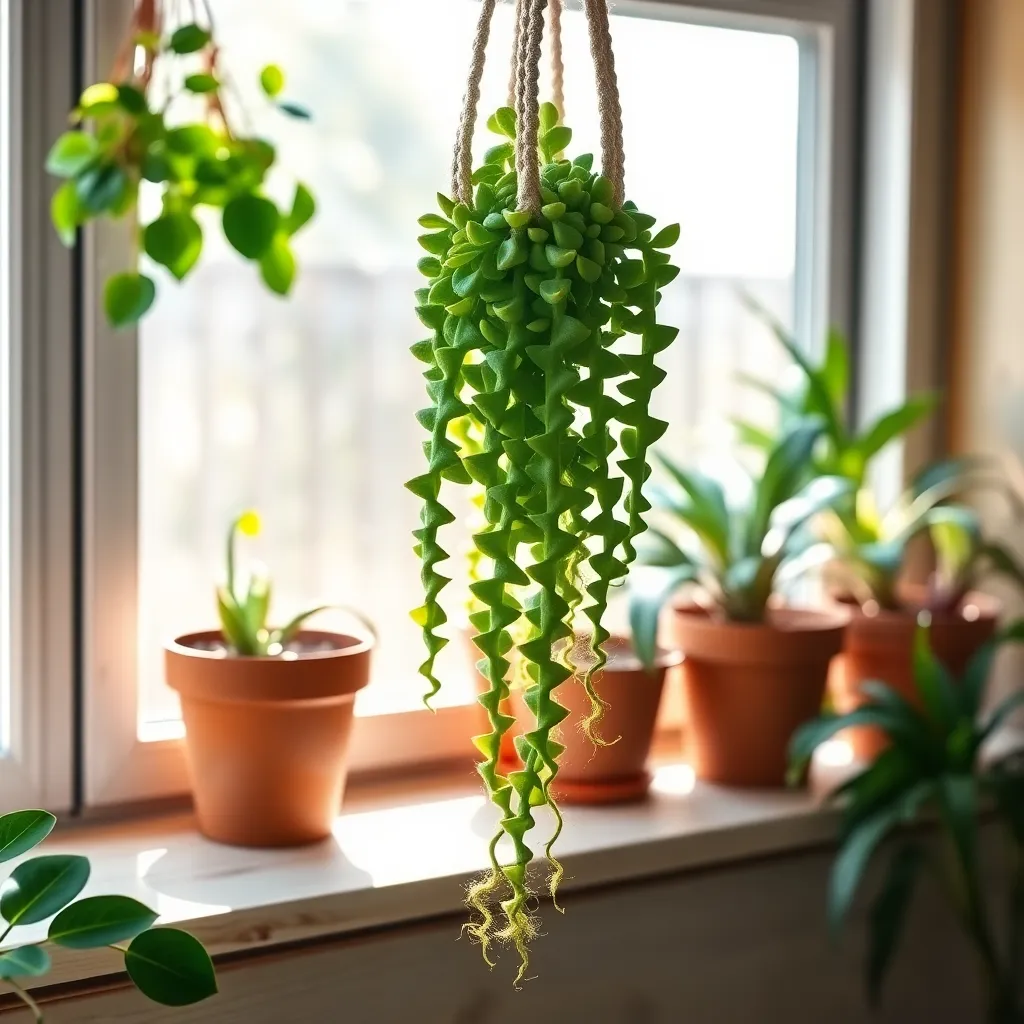
Burro’s Tail, also known as Sedum morganianum, is a resilient succulent that thrives in hanging baskets, making it an excellent pet-friendly choice. Its cascading, fleshy stems create a stunning visual effect, especially in well-lit indoor spaces.
For optimal growth, Burro’s Tail requires a bright spot with indirect sunlight. Direct sunlight can scorch the leaves, so ensure to place it where it gets ample filtered light.
When it comes to watering, Burro’s Tail prefers a soak-then-dry approach. Allow the soil to dry out completely between waterings to prevent root rot, a common issue with overwatered succulents.
Choose a well-draining potting mix, such as a cactus or succulent-specific blend, to keep the roots healthy. A pot with drainage holes is essential to avoid water accumulation at the bottom.
Advanced gardeners can propagate Burro’s Tail using stem cuttings, which root easily when placed on moist potting soil. Regularly rotating the plant will also promote even growth and prevent it from leaning towards the light source.
Care Tips for Pet-Friendly Greens

When it comes to caring for pet-friendly greens, ensuring proper watering is essential. Most hanging plants prefer their soil to dry out slightly between waterings, so check the top inch of soil before giving them a drink.
Light conditions are another crucial factor for thriving plants. Position your hanging plants where they receive bright, indirect light, as this mimics their natural environment and encourages healthy growth.
For beginners, choosing the right soil is vital to plant health. Use a well-draining potting mix, often labeled as “cactus mix,” to prevent root rot and maintain ideal moisture levels.
Advanced gardeners can experiment with humidity levels to enhance plant vitality. Misting or using a pebble tray can boost humidity, especially during dry months, benefiting plants like Boston Ferns and Spider Plants.
Regular maintenance like pruning is necessary to keep your hanging greens looking their best. Trim dead or yellowing leaves to encourage new growth and prevent pests from finding shelter in decaying foliage.
Fertilization is another aspect that can improve plant health. Feed your hanging plants with a balanced, water-soluble fertilizer every four to six weeks during the growing season for optimal results.
Creating a Pet-Safe Plant Display
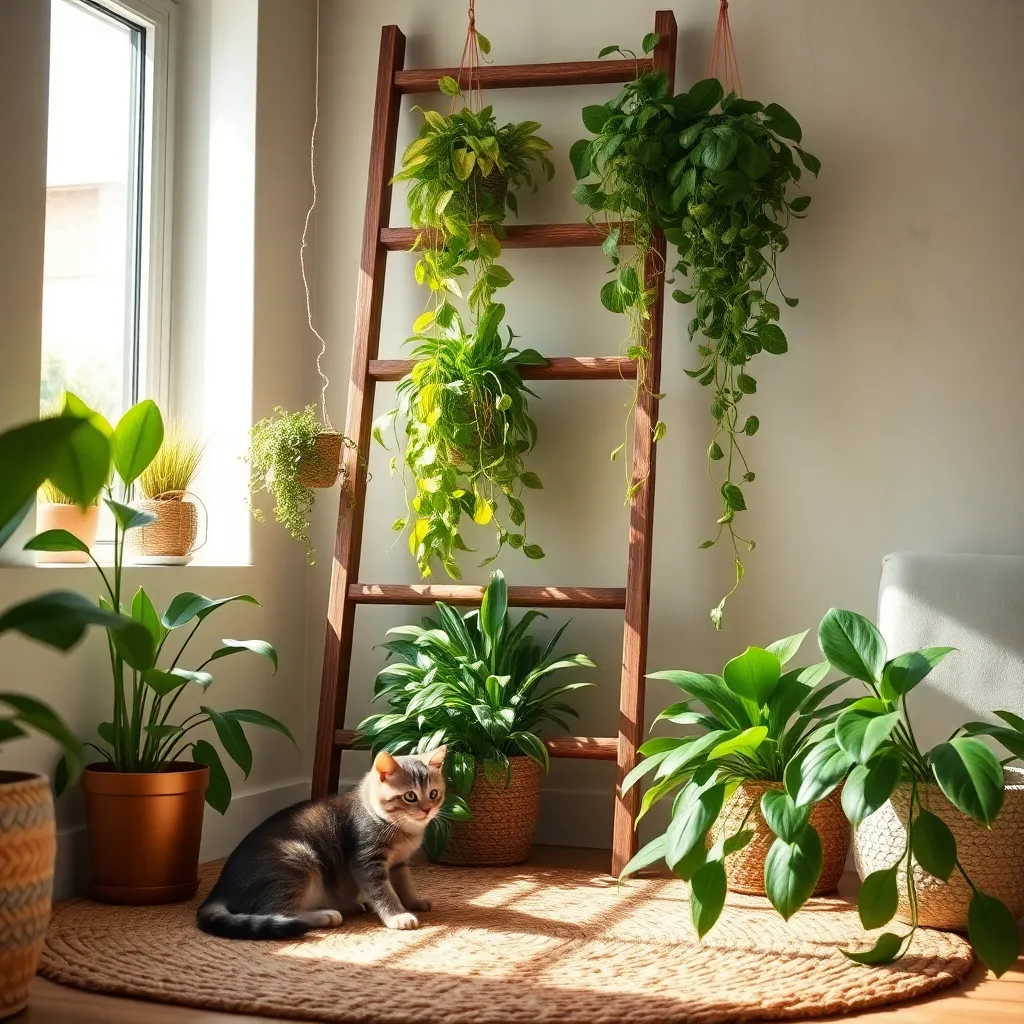
Creating a pet-safe plant display is both an art and a science, requiring careful selection and placement of plants. Start by choosing materials that are sturdy and non-toxic to pets, such as natural jute or cotton ropes for hanging baskets.
When selecting plants, opt for those known to be non-toxic to animals like Boston Ferns and Spider Plants. Ensure these plants are placed at a height that’s not easily reachable by curious pets, preventing accidental nibbling or damage.
Begin with a solid framework by using a reliable hook or bracket that can support the weight of the plants and containers. Consider installing hooks into studs or using toggle bolts in drywall to ensure stability and safety.
For the soil, use a well-draining potting mix to prevent waterlogged roots, which can be harmful to plants and create messes if knocked over. Incorporating perlite or coarse sand can enhance drainage, ensuring a healthy root system.
Maintain a consistent watering schedule to keep your plants thriving without overwatering. Generally, most hanging plants require watering every 7-10 days, but this can vary based on humidity and temperature.
Advanced gardeners may consider using self-watering pots to maintain optimal moisture levels, reducing the risk of over- or under-watering. This approach ensures plants remain healthy and vibrant, offering a lush display without constant supervision.
Conclusion: Growing Success with These Plants
In our exploration of the ‘8 Pet-Friendly Hanging Plants to Grow at Home,’ we’ve uncovered a delightful blend of nature’s beauty and relationship enrichment. By introducing these lush companions into your living space, you’re not only enhancing your home’s aesthetic but also nurturing a peaceful coexistence with your furry friends. Each plant—be it the elegant Boston Fern, the vibrant Spider Plant, or the resilient Areca Palm—offers a unique opportunity to cultivate patience, care, and mutual respect, qualities that are fundamental to any thriving relationship.
As you consider bringing these plants into your home, take a moment to reflect on how they can symbolize growth and harmony in your personal connections. Why not start today by selecting one plant to nurture, cultivating it as a living testament to your commitment to fostering loving relationships?
Remember, a flourishing relationship, much like a thriving plant, requires ongoing attention and care. Bookmark this article to revisit these insights whenever you need inspiration or guidance. As you continue to invest in both your home and relationships, you’re paving the way for lasting success and happiness. Embrace this journey with enthusiasm, knowing that each step forward enriches the tapestry of your life.

